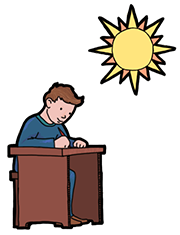The ability to realize the difference between similar-sounding speech sounds and words, or other sounds.
Auditory discrimination gradually develops in preschool age and the ability to determine sounds in words correctly is a prerequisite to learning to read. At the beginning of first grade, children can syllabify words, determine the first and last letter in words (very soon they will learn to spell whole words), perceive vowel length and discriminate between similar-sounding but different words. All of this belongs to the category of so-called phonemic awareness (phoneme = speech sound). This ability is often weakened in individuals with dyslexia and causes reading difficulties for almost all of them, or writing difficulties in individuals with dysorthography (these two kinds of difficulties usually go hand in hand, only in certain age one might get slightly more prominent than the other – in Czech it is definitely more difficult to learn to write correctly than to speak). Although these people’s hearing is impeccable, when they are to precisely determine similar-sounding sounds and tones, it’s like they don’t “hear” the difference, or even when they get older, they must stop to think about it to be able to determine it; they don’t realize the difference automatically.
And the same thing happens with the awareness of sounds in words – they perceive and understand the word as a whole perfectly, but the precise determination of every single sound is difficult for them. However, we need phonemic awareness not only when writing a word, but also when we see a written word composed of speech sounds, because it is thanks to phonemic awareness that we can figure out how to pronounce it. That’s why children in primary school diagnosed with dyslexia learn to spell words and work with speech sounds (to determine vowel length, distinguish between soft and hard syllables, etc.). Sometimes this skill develops very well with training, but it is still not fully automated for fast reading and writing, and that’s why some mistakes may still appear. An important precaution that might make working easier is to provide enough time for both of these activities, so that the individual could take time to think how to read a certain word (especially in case of foreign and less common words) or how to write it. Very often, these problems manifest to a greater extent when learning foreign languages or encountering unknown words (e.g. technical terms we have never heard before).

Tip: Pay attention to yourself! Keep track of what are the best learning conditions for you (certain time of day, presence of other people, a number of pictures, method of explanation, etc.). Then try to recreate these conditions when learning for school.